
Epiblema scutulana is a moth of the family Tortricidae. It is found in the Palearctic realm. The species closely resembles Epiblema sticticana and Epiblema cirsiana, identification is only possible on the basis of microscopic examination of the genitalia.

Epiblema foenella, the white-foot bell, is a moth of the family Tortricidae.
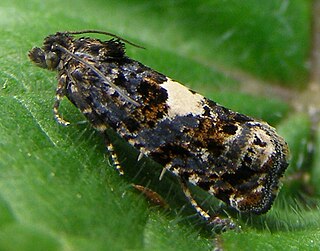
Epiblema is a very large genus of moths belonging to the subfamily Olethreutinae of the family Tortricidae. Most species occur in the Holarctic; a few in South Asia and Africa.

Epiblema strenuana, the stem-galling moth or ragweed borer, is a moth of the family Tortricidae. It is endemic to North America, but was introduced to Australia from Mexico to control the weeds of the family Asteraceae in 1982. It is occasionally misspelled as Epiblema strenuanum.
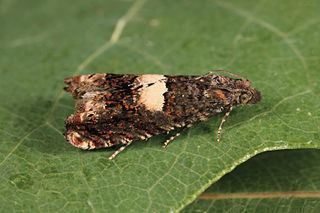
Epiblema sticticana is a species of moth of the family Tortricidae described by Philogène Auguste Joseph Duponchel in 1842.

Epiblema cirsiana, the knapweed bell, is a species of moth of the family Tortricidae. It is found in Great Britain, Fennoscandia, northern Russia, Estonia, Latvia, Denmark, Germany, the Netherlands, the Czech Republic, Slovakia and Romania.
Epiblema lasiovalva is a species of moth of the family Tortricidae. It is found in India.
Epiblema lochmoda is a species of moth of the family Tortricidae. It is found in India.

Epiblema acceptana is a species of moth of the family Tortricidae. It is found in China (Heilongjiang) and the Russian Far East (Amur).
Epiblema alishana is a species of moth of the family Tortricidae. It is found in Taiwan.
Epiblema banghaasi is a species of moth of the family Tortricidae. It is found in China (Heilongjiang) and Russia.
Epiblema batangensis is a species of moth of the family Tortricidae. It is found in China.

Epiblema expressana is a species of moth of the family Tortricidae. It is found in China, Japan, Russia and Korea.
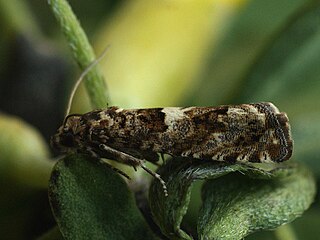
Epiblema sarmatana is a species of moth of the family Tortricidae. It is found in France, Germany, Austria, Switzerland, Italy, the Czech Republic, Slovakia, Bulgaria, Romania, the Near East, Russia, Kazakhstan and China (Gansu).
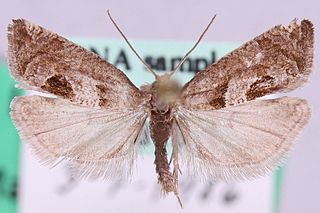
Epiblema junctana is a species of moth of the family Tortricidae. It is found in Sweden, Denmark, Germany, Austria, the Czech Republic, Slovakia, Poland, Bulgaria, Romania, Hungary, Ukraine, the Near East, Russia, Kazakhstan, Iran, Central Asia and China (Henan).

Epiblema rimosana is a species of moth of the family Tortricidae. It is found in China, Korea, Japan and Russia.
Epiblema sugii is a species of moth of the family Tortricidae. It is found in China (Xinjiang) and Japan.

Epiblema gibsoni is a species of moth of the family Tortricidae. It is found in North America, where it has been recorded from Arkansas, Illinois, Indiana, Kentucky, Michigan, Mississippi, Missouri, Ohio, North Carolina and South Carolina.
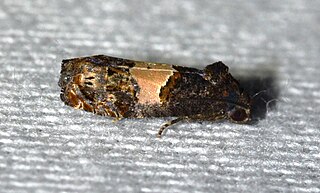
Epiblema glenni is a species of moth of the family Tortricidae. It is found in North America, where it has been recorded from Illinois, Kentucky, Michigan, Missouri, North Carolina, Ohio and Tennessee.

Epiblema scudderiana, the goldenrod gall moth, is a species of tortricid moth in the family Tortricidae. As their common name suggests, they do feed on and form galls on goldenrod stems. To overwinter the caterpillars line the inside of their galls with silk before going into diapause.











